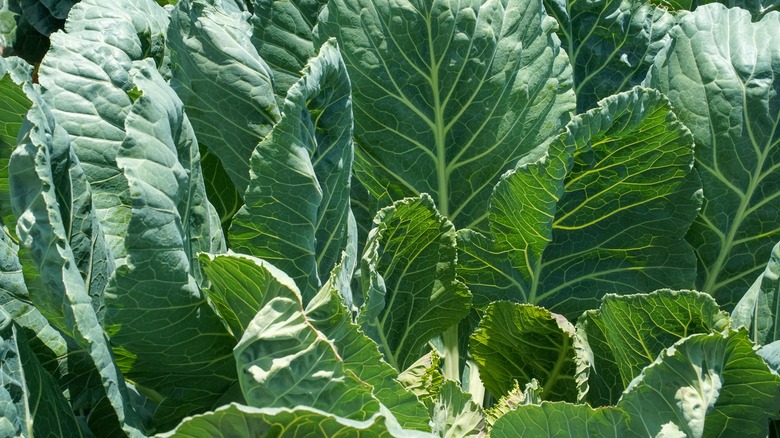An Underrated, Dairy-Free Way To Add More Calcium To Your Diet
Calcium has long been synonymous with dairy. Milk mustaches, flexed biceps, and the iconic "It Does a Body Good" and "Got Milk?" campaigns, which did an exceptional job at strengthening the connection. Milk supposedly means strong, and strong means bones — and bones mean calcium (via Mental Floss).
Calcium is an important mineral with many essential functions. Your levels can decline due to loss via urine; and many simply don't get enough in their diet (via Healthline). Most people habitually turn to dairy to counteract any loss, but those with allergies or special dietary needs (or just looking to cut back on dairy) seek alternative sources.
While dairy remains one of the best sources of calcium, there are other options that shouldn't be discounted, especially for those seeking non-dairy options to help out their skeleton. One such source just may be lounging away in your crisper drawer right now.
Lactose-free and leafy
More synonymous with Southern cooking than calcium, collard greens happen to be an excellent dietary source of calcium. Those dark, green leaves are brimming with the mineral. According to the USDA, one cup of raw collards contains 83.5 mg of calcium and a cup of cooked collards can contain over 300 mg.
How does that compare to dairy? A cup of whole milk contains 306 mg (per USDA). So, with a hearty side of braised collards on your plate, or a large salad chock-full of the raw leaves, you're pretty much right there alongside the milk — if not surpassing it. The recommended daily allowance of calcium is 1,000 mg for adults aged 19-50 years, and 1200 mg for women over 50 and men over 71 (via Mayo Clinic). While neither solely milk nor collards sound like a particularly appetizing way to hit that goal, as part of a balanced diet, collards are a different addition to shake things up and put down the glass.

